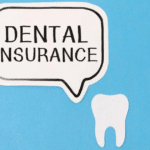Auto insurance is an essential part of modern driving. Whether you’re a new driver or a seasoned one, understanding the importance of general auto insurance is crucial to protecting yourself, your passengers, and your vehicle. In this article, we will explore why auto insurance is a necessity, the different types of coverage, and how it can save you from significant financial loss. Additionally, we will answer common questions, provide insights into choosing the best coverage, and discuss key takeaways that will help you make informed decisions about your auto insurance needs.
Key Takeaways:
- Auto insurance is required in most states and serves as a vital financial protection against accidents, theft, and liability claims.
- Liability coverage, collision, and comprehensive coverage are the primary forms of protection provided by auto insurance policies.
- Understanding your deductible and ensuring that you can afford it in the event of an accident is essential when choosing a policy.
- Additional coverages such as roadside assistance, gap insurance, and uninsured motorist coverage can provide extra protection based on your needs.
- Always compare quotes, understand the policy terms, and take advantage of discounts to ensure you’re getting the best deal.
Why General Auto Insurance is Crucial

Auto insurance is designed to offer financial protection in the event of an accident, damage, or theft involving your vehicle. In most places, it is a legal requirement for all drivers. However, even if it weren’t mandatory, purchasing auto insurance would still be one of the wisest financial decisions you can make. The risk of accidents, vehicle damage, theft, and the potential costs of medical bills or liability claims can be overwhelming without the proper coverage. General auto insurance protects you from these risks, ensuring that you won’t bear the full financial burden on your own.
Key Reasons Why General Auto Insurance is Important
1. Legal Requirements
In many countries and states, auto insurance is required by law. Most regions have specific minimum coverage requirements that drivers must meet. Failing to carry the appropriate insurance could result in fines, license suspension, and even jail time, depending on the severity of the infraction. These laws are in place to ensure that all drivers share the responsibility for the financial costs associated with car accidents and other incidents on the road.
2. Financial Protection in Case of Accidents
Accidents happen when you least expect them. Whether you are involved in a minor fender bender or a serious collision, the costs of repairs, medical bills, and potential liability can quickly add up. Without insurance, paying for these expenses out of pocket could put a significant strain on your finances. General auto insurance covers both vehicle damage and medical expenses, helping you recover financially.
3. Coverage for Vehicle Damage or Theft
Your vehicle is a significant investment, and without insurance, you could face the possibility of losing that investment entirely if your car is damaged in an accident or stolen. Comprehensive and collision coverage, which are part of general auto insurance policies, protect your vehicle in such situations. Collision coverage helps pay for repairs to your car if you’re involved in an accident, while comprehensive coverage pays for damages resulting from events other than accidents, such as theft, vandalism, or natural disasters.
4. Medical Expenses and Injury Protection

In the event of an accident, medical bills can pile up quickly, especially if you or your passengers suffer serious injuries. Auto insurance typically includes medical payment coverage, which helps pay for medical expenses regardless of who is at fault in the accident. Additionally, personal injury protection (PIP) is a type of coverage that can cover lost wages and other related expenses resulting from the injuries you sustain in an accident.
5. Liability Coverage for Property Damage and Injury
One of the most important aspects of general auto insurance is liability coverage. This protects you if you’re responsible for an accident that causes injury or damage to someone else. Liability coverage helps cover the cost of medical bills for others involved in the accident and repair or replacement costs for damaged property. If you’re sued for damages, liability coverage can also cover legal fees. Without this coverage, you would be personally responsible for these costs, which could be financially devastating.
6. Peace of Mind
Having auto insurance gives you peace of mind, knowing that you’re covered in the event of an emergency. It provides reassurance that you don’t have to bear the financial burden of an accident or other unexpected incident. Knowing that you can rely on your insurance in difficult situations can reduce anxiety, especially when you’re on the road.
7. Protection Against Uninsured or Underinsured Drivers
Not all drivers carry adequate auto insurance, and in some cases, accidents may involve an uninsured or underinsured driver. In such instances, your insurance policy can provide coverage through uninsured/underinsured motorist protection. This ensures that you aren’t left with the financial responsibility if the at-fault driver doesn’t have enough insurance to cover the damages.
Types of Coverage Included in General Auto Insurance
General auto insurance policies come with different types of coverage that you can choose from based on your needs. Below are the most common types of coverage included in auto insurance:
1. Liability Coverage
Liability coverage is legally required in most states and covers the cost of damage or injury to others caused by your actions while driving. It typically includes:
- Bodily injury liability: Covers medical expenses and legal fees for the other party if you’re responsible for their injuries.
- Property damage liability: Pays for the repair or replacement of the other party’s property (e.g., their vehicle) if you cause the damage.
2. Collision Coverage
Collision coverage helps pay for repairs to your car if you’re involved in a collision with another vehicle or object. It covers damage to your vehicle regardless of who is at fault in the accident.
3. Comprehensive Coverage
Comprehensive coverage protects against damage to your vehicle caused by events other than a collision. This includes damage from theft, vandalism, falling trees, hailstorms, or fire. It can be especially helpful if you live in an area prone to such incidents.
4. Medical Payments Coverage
Medical payments coverage (or MedPay) helps pay for medical expenses incurred due to an accident, regardless of who is at fault. It can cover hospital bills, doctor visits, and even funeral expenses in some cases.
5. Personal Injury Protection (PIP)
PIP is similar to medical payments coverage but offers broader protection. It covers medical expenses, lost wages, and other costs related to injuries caused by an accident. PIP is required in some states, and it can be valuable if you’re unable to work due to injuries sustained in a crash.
6. Uninsured/Underinsured Motorist Coverage
This coverage protects you if you’re in an accident with a driver who either doesn’t have insurance or doesn’t have enough insurance to cover your expenses. It can be particularly useful in hit-and-run situations.
How to Choose the Right General Auto Insurance Policy
Choosing the right auto insurance policy depends on several factors. Here are some steps to guide you through the process:
1. Assess Your Coverage Needs

Consider factors such as the value of your vehicle, your driving habits, your budget, and whether you live in an area with high accident rates or extreme weather conditions. These will determine the level of coverage you need.
2. Compare Quotes
Insurance premiums can vary significantly between companies. Shop around to get quotes from multiple providers and compare the coverage options, pricing, and customer service reputation. This will help you find the best deal for your needs.
3. Understand Policy Terms
Carefully review the terms and conditions of the policy, including the deductible amounts, exclusions, and coverage limits. Make sure you fully understand what is and isn’t covered before signing a contract.
4. Look for Discounts
Many insurance companies offer discounts for safe driving, good credit, bundling policies, or installing safety devices in your vehicle. Take advantage of these discounts to lower your premiums.
5. Check Customer Reviews
Look for customer feedback on the insurance company’s claims process, customer service, and overall satisfaction. Choose a provider that is known for its reliability and responsiveness.
Additional Considerations in Choosing Auto Insurance
While the basic types of coverage—liability, collision, and comprehensive—are essential, there are also additional considerations that can help tailor your auto insurance to your specific needs. These include optional coverages, as well as factors that may influence your premiums.
1. Uninsured/Underinsured Motorist Coverage

One of the most crucial types of coverage is uninsured/underinsured motorist coverage. It may not be required in every state, but it can offer essential protection. If you’re involved in an accident and the other driver doesn’t have insurance (or doesn’t have enough coverage), this policy will cover your medical bills and vehicle damage. Many accidents occur with drivers who are either uninsured or underinsured, making this coverage a wise investment.
In some areas, uninsured motorist protection is automatically included in your policy, but you might need to opt for the additional coverage if it isn’t. Always check with your provider to ensure you are adequately protected.
2. Roadside Assistance Coverage
Many drivers benefit from adding roadside assistance coverage to their auto insurance policy. This coverage typically includes services like:
- Towing if your car breaks down.
- Battery jump-starts.
- Flat tire changes.
- Lock-out services.
If you frequently travel long distances or live in an area with a high likelihood of weather-related car issues, this added protection can be invaluable. Roadside assistance coverage usually comes at a minimal extra cost but can save you from significant inconvenience in case of an emergency.
3. Gap Insurance
If you have a loan or lease on your vehicle, you may want to consider adding gap insurance. When your vehicle is totaled in an accident, standard collision or comprehensive insurance will only pay the current market value of your car. However, if you owe more on the car loan or lease than the vehicle is worth, you will be responsible for the difference unless you have gap insurance. This type of insurance helps cover the difference between the amount you owe and your car’s actual cash value (ACV).
4. Custom Parts and Equipment Coverage
If you have added custom parts or equipment to your vehicle—such as specialized tires, sound systems, or performance enhancements—standard auto insurance policies might not cover the replacement or repair costs if they are damaged or stolen. Custom parts and equipment coverage can be added to your policy to ensure that your custom modifications are also protected.
5. Rental Car Coverage
If you drive frequently and need a rental car while your vehicle is being repaired, rental car coverage can be a helpful addition. Depending on your insurance provider and the level of coverage, your policy may cover the cost of a rental car during the time your car is being repaired due to a covered incident.
6. Claims Process and Customer Service
The claims process can often be one of the most stressful aspects of dealing with auto insurance, particularly after an accident. The quality of the claims process, how fast your claim is processed, and the reputation of the insurance company’s customer service can all play a significant role in your experience. It’s essential to review the insurer’s claims process and customer service ratings before committing to a policy. A company with an excellent track record of providing timely and efficient service can save you a lot of frustration.
7. Bundling Insurance Policies
Insurance companies often offer discounts to customers who bundle multiple insurance policies, such as home and auto, under the same provider. Bundling policies can help reduce premiums, making your auto insurance more affordable while ensuring that you get comprehensive coverage for all your needs.
8. Telematics or Usage-Based Insurance
Some auto insurers offer discounts for safe driving through telematics programs, also known as usage-based insurance. These programs use a device installed in your car or a mobile app to track your driving habits, such as speed, braking, and mileage. If you demonstrate safe driving behaviors, you can receive discounts on your premiums. If you are a careful driver, this can be a great way to reduce your costs.
Avoiding Common Mistakes When Choosing Auto Insurance
While there are many benefits to having auto insurance, it’s equally important to avoid certain common mistakes that can lead to inadequate coverage or unnecessarily high premiums.
1. Choosing Minimum Coverage Only
While minimum liability coverage is legally required, it is often insufficient for protecting you in all situations. Opting for the minimum coverage may result in higher out-of-pocket costs if you are involved in a severe accident. Comprehensive coverage and collision coverage can provide added security, especially if you own a newer vehicle.
2. Failing to Review Your Policy Regularly

Over time, your coverage needs may change. For instance, as your vehicle ages, you might no longer need comprehensive coverage, or your driving habits might change, making some coverages more essential than others. It’s important to review your policy regularly, especially after major life events such as moving, getting a new vehicle, or changing jobs.
3. Underestimating the Value of Customer Service
While cost is a significant factor when choosing auto insurance, it should not be the only one. Some companies may offer cheaper premiums but provide poor customer service or slow claims processing. In a time of need, such as after an accident, you will want an insurer that is responsive and helpful. Take the time to research customer reviews and satisfaction ratings.
4. Not Asking About Discounts
Many insurance companies offer discounts for things like bundling policies, maintaining a clean driving record, or installing safety features in your vehicle. If you’re not proactive in asking about these discounts, you could be missing out on savings. Always inquire about available discounts and see how they can lower your premium.
5. Ignoring Deductibles
The deductible is the amount you agree to pay out of pocket before your insurance kicks in. A higher deductible usually means lower premiums, but it also means that you will have to pay more in the event of a claim. Make sure you choose a deductible that you can comfortably afford if an accident or damage occurs.
Factors to Consider When Choosing Auto Insurance
When choosing auto insurance, it’s important to go beyond the basics and think about other factors that could impact both your coverage and costs. Making well-informed decisions ensures that you get the most out of your policy while still protecting your financial interests.
1. Vehicle Type and Usage
The type of vehicle you drive plays a significant role in your auto insurance premium. For example, sports cars, luxury cars, and high-performance vehicles typically cost more to insure due to their higher repair costs, higher risk of theft, and the likelihood of more severe accidents. Additionally, the way you use your vehicle matters. If you only use your car for commuting, your premiums might be lower than if you drive for business purposes or long road trips regularly.
If you have a high-performance or luxury car, it’s important to ensure that your policy includes adequate coverage for both damage and theft. Some insurers may offer specialized coverage for high-value vehicles, so be sure to ask about any available options.
2. State-Specific Insurance Requirements
Auto insurance requirements vary from state to state. Each state has different minimum liability requirements, and some states may also require additional coverages such as personal injury protection (PIP) or uninsured motorist coverage.
Before purchasing a policy, make sure to review your state’s auto insurance laws to understand what is required by law. Even if your state does not require certain coverages, it might be wise to consider adding them to your policy to enhance your protection.
3. Safety Features and Anti-Theft Devices

Vehicles equipped with modern safety features such as airbags, anti-lock brakes, and electronic stability control may qualify for discounts on auto insurance premiums. Anti-theft devices, such as car alarms, tracking systems, and steering wheel locks, can also reduce your premium. Insurance companies reward drivers with these features because they reduce the risk of injury and the likelihood of theft, thus lowering the insurer’s overall costs.
When buying a car or upgrading your vehicle, consider investing in safety features or anti-theft systems if you can. Additionally, always notify your insurance provider of any updates to your vehicle, as you may qualify for reduced rates.
4. Your Driving History
A clean driving record typically leads to lower auto insurance premiums. On the other hand, a history of accidents, speeding tickets, or other traffic violations can increase your premiums, as insurers see you as a higher risk.
Insurance companies will check your driving history when determining your rate, so it’s essential to maintain a safe driving record. If you’ve been involved in an accident or received traffic violations, consider taking a defensive driving course. Some insurance companies offer discounts to drivers who complete such courses.
If you do face an accident or violation, being proactive and addressing the issue with your insurer can help minimize its impact on your rates.
5. Age, Gender, and Marital Status
Age, gender, and marital status can affect your auto insurance premium. Younger drivers, especially teenagers, tend to pay higher premiums due to their inexperience on the road. However, rates typically decrease as you age and gain more driving experience. Additionally, married drivers generally pay less than single drivers, as insurers see them as less risky.
While you can’t change your age or gender, understanding these factors can help set your expectations for your insurance premium. In some cases, a married driver or older adult might qualify for discounts or lower rates. It’s also essential to consider the driving habits of anyone listed on your policy to get a full picture of how to manage costs.
Also Read: Understanding Auto Coverage Insurance: Types, Benefits And Costs
Conclusion
General auto insurance is a necessary component of responsible vehicle ownership. It offers protection for both the driver and others on the road, covering damage, medical expenses, liability claims, and more. With different coverage options available, including liability, collision, comprehensive, and medical coverage, it’s essential to evaluate your individual needs and choose a policy that provides adequate protection while remaining affordable.
By carefully selecting the right auto insurance, reviewing policies periodically, and understanding the nuances of different coverage types, drivers can ensure that they are adequately protected against unforeseen accidents and damages. This not only provides peace of mind but also helps avoid financial hardship caused by accidents, theft, or other unexpected events.
Frequently Asked Questions (FAQs)
Is auto insurance required by law?
Yes, in most states and countries, auto insurance is mandatory for all drivers.
What does liability coverage include?
Liability coverage includes bodily injury liability (medical costs for others) and property damage liability (repair or replacement of damaged property).
What’s the difference between comprehensive and collision coverage?
Collision coverage pays for repairs to your car after a crash, while comprehensive coverage covers damages from non-collision events like theft or natural disasters.
What is the deductible in an auto insurance policy?
The deductible is the amount you pay out of pocket before your insurance coverage kicks in to cover the rest of the costs.
Does my auto insurance cover rental cars?
Many auto insurance policies offer rental car coverage as an add-on, but not all policies include this by default.
What does personal injury protection cover?
Personal injury protection (PIP) covers medical expenses, lost wages, and other costs related to injuries caused by an accident.
What should I do if I’m in an accident and the other driver is uninsured?
If you have uninsured motorist coverage, it will cover your medical and repair costs. Otherwise, you may need to file a claim with your own insurance or seek compensation from the at-fault driver.





